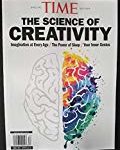Learning from Leonardo in Blogging for Business

“Learning from Leonardo”, Walter Isaacson’s article in Time: The Science of Creativity, could serve as a checklist for blog content writers. DaVinci’s work holds lessons for all of us, the author says; even if we can’t match DaVinci’s talents, we can try to be more like him. How can that apply to creating innovative and captivating blog content?
Be curious, relentlessly curious about everything around you.
I have a theory about human curiosity that I think tests out in corporate blogging: Our curiosity is at its most intense when it concerns testing our own limits. Yes, readers like juicy gossip tidbits about sports and movie stars. Yes, readers have interest in how stuff works in the world and how things came to be. And, yes, (as I always stress in corporate blogging training sessions), by definition of their having found your blog, readers have an interest in your field. But (or so my theory goes, anyway), readers are most curious about themselves, how they “work” and the limits of their own knowledge and their own physical capabilities. I believe that’s why readers find arcane pieces of information and “quizzes” so hard to resist .
Observe, starting with the details.
Examples and details are the very things people remember long after reading a piece. Corporate websites provide basic information about a company’s products or a professional’s services, but the business blog content is there to attach a “face” and lend a “voice” to that information by filling in the finer details. Ask yourself what you want readers to know about your topic for that post and think of three details for each idea, Quick Study advises students.
Go down rabbit holes. (Leonardo “drilled down for the pure joy of geeking out,” Isaacon says.)
I find seeming “useless” tidbits of information highly useful when it comes to blog content writing. It’s interesting when business owners or practitioners present little-known facts about their own business or profession. History tidbits, for example, engage readers’ curiosity, evoking an “I didn’t know that!” response.
Respect facts. “Be fearless about changing your mind based on new information.”
Whether it’s business-to-business blog writing or business to consumer blog writing, the blog content itself needs to use opinion to clarify what differentiates that business, that professional practice, or that organization from its peers. People are looking for more than information – they need perspective. On the other hand, nothing is more compelling than honesty. If the business owner or practitioner’s perspective has evolved, that change of mind should be powerfully clarified in the blog content.
Avoid silos. At presentations, Isaacson relates, Steve Job would use one slide depicting the intersection between two roads: Liberal Arts and Technology, Isaacson notes. Besides coming across as more credible, when business owners or professional practitioners stay up to date in their own fields, they are in a better position to spot threats and opportunities early on. If readers can see evidence in your content of, not only your expertise, but your openness to insights gained from experts in other fields, that broadens their own understanding along with their trust in you!
In striving for authenticity and creativity, we blog content writers have a lot to learn from Leonardo DaVinci!





Follow us online!